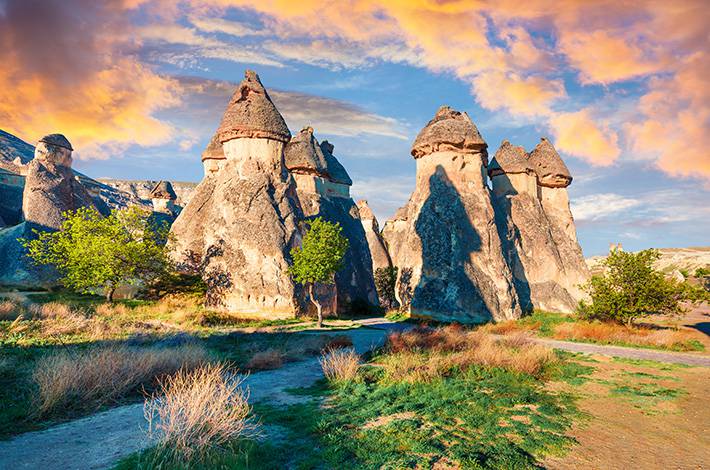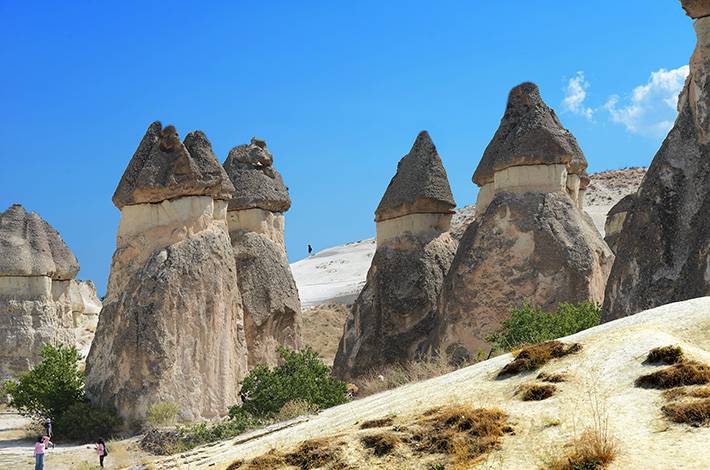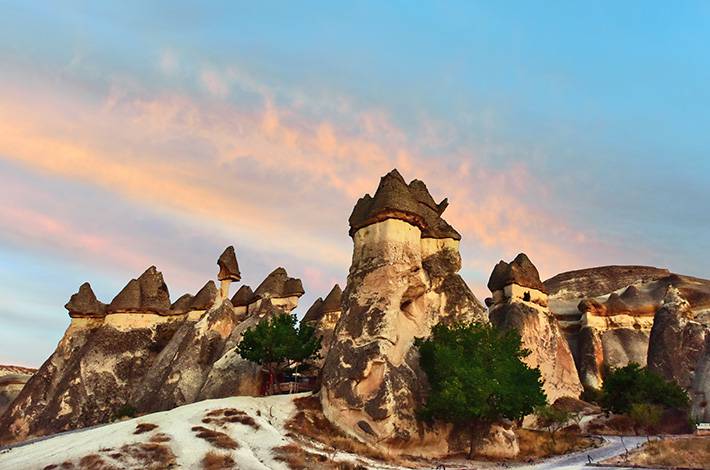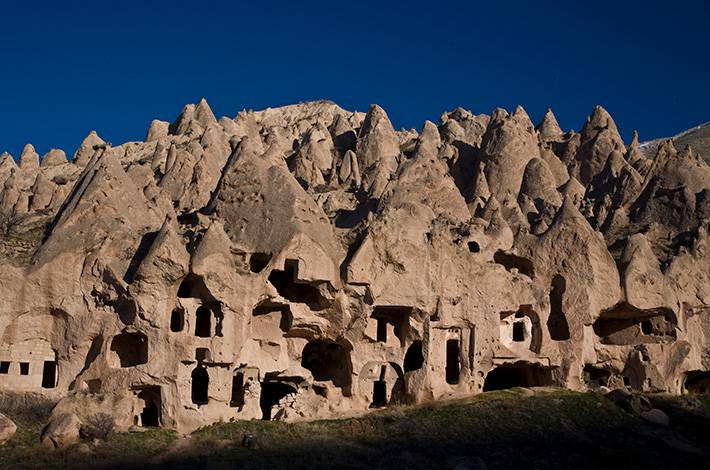Zelve Village is situated on the steep northern slopes of Aktepe and comprises three valleys. The precise date of the initial settlement in Zelve is uncertain. The first valley contains a mill (seten) used for the production of bulgur, Balıklı and Üzümlü Church, and a winery in the east. The second valley is home to the Church of the Holy Cross. The village square and a monastery complex carved into a dome-like rock mass are located in the third valley. The mosque is situated opposite the monastery. At the end of the valley, pigeonhouses carved on high slopes and their primitive art decorations on the facades contribute to the unique value of the archaeological site. At the exit point of the valley there is the Direkli Church. Paşabağı, formerly known as the ‘Valley of the Priests’, is notable for its distinctive fairy chimneys. These multi-bodied and multi-headed natural formations were carved by humans to serve as chapels and living spaces. One of the three-headed fairy chimneys has a chapel built in the name of St. Simeon, which also contains a cell. Saint Simeon, who lived an ascetic life in the vicinity of Aleppo in the fifth century, escaped from the intense interest of the populace. When rumours circulated that he was performing miracles, he sought refuge initially on a two-metre-high column and subsequently on a fifteen-metre-high column. He resided there for an extended period.
ZELVE-PAŞABAĞLAR ARCHAEOLOGICAL SITE






